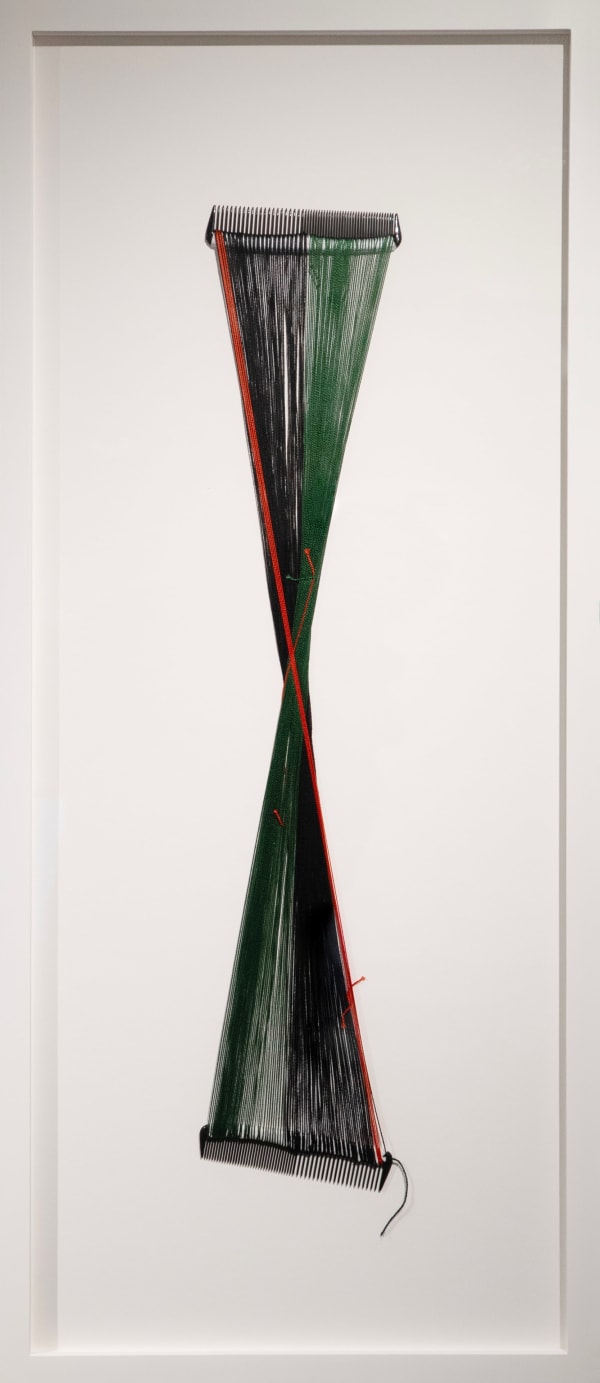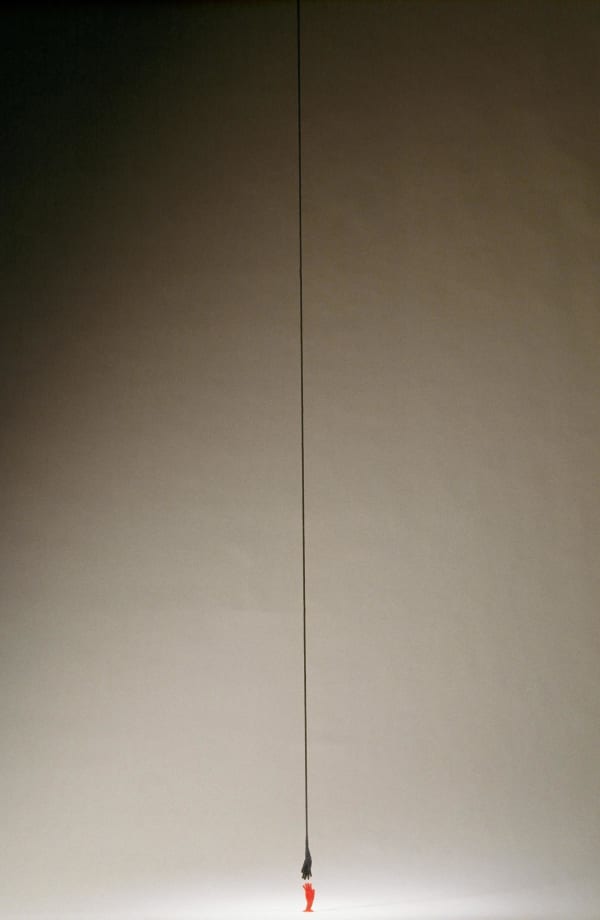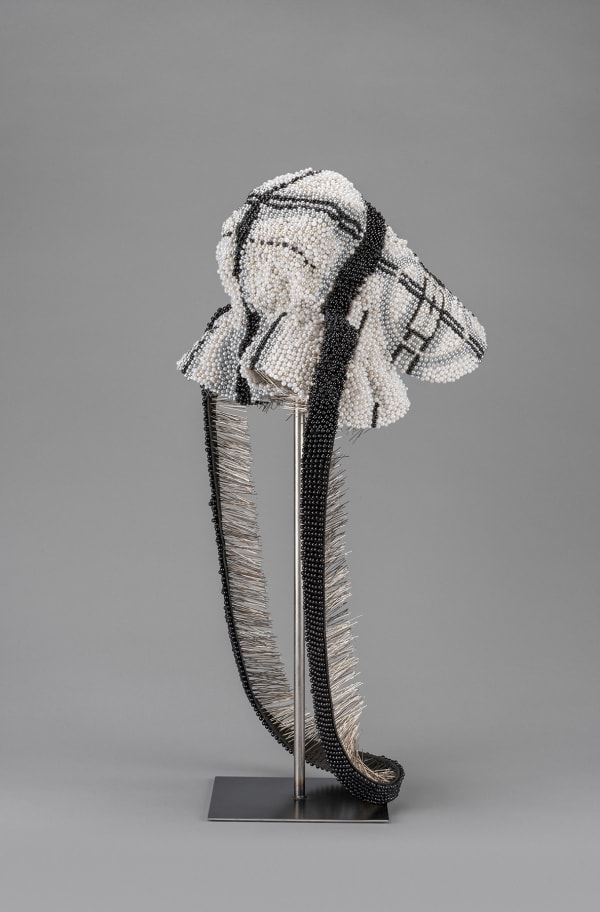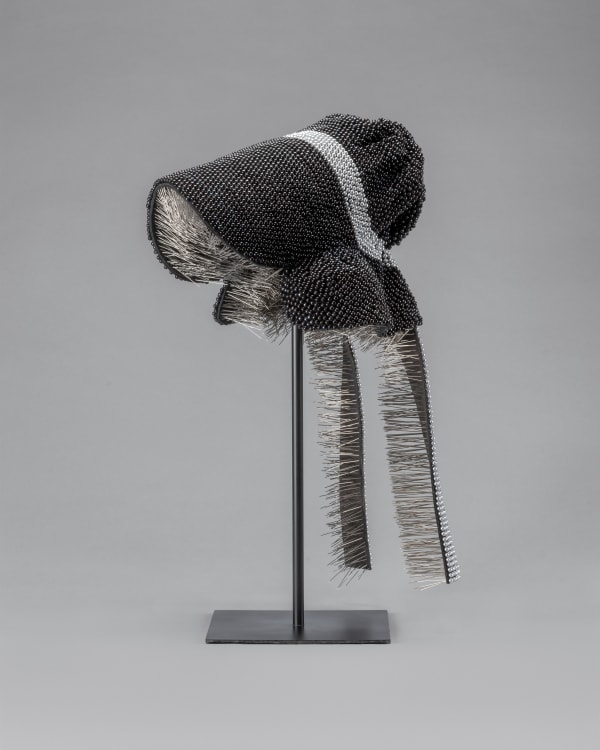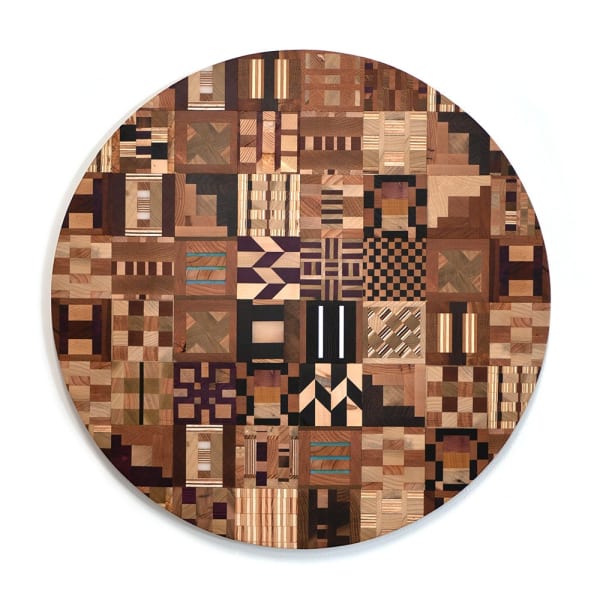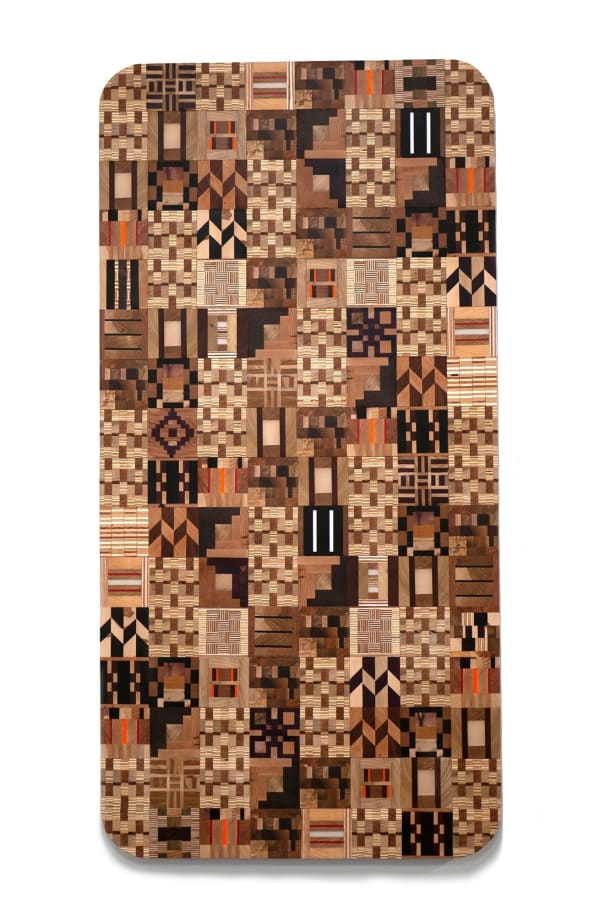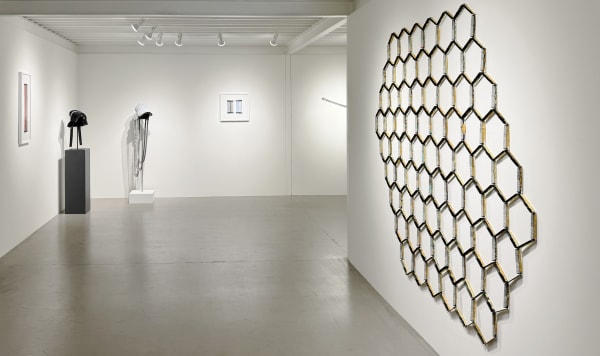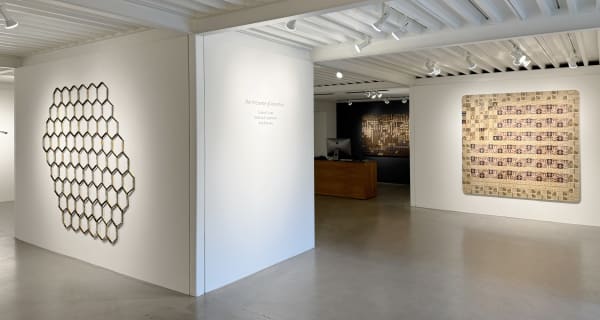The Presence of Ancestors: Sonya Clark, Angela Ellsworth, Ato Ribeiro
The body's gestures of communication, taking form as practices of gathering and making, are passed on through generations and migrations. The presence of these ancestral voices in our contemporary existence is explored in Lisa Sette Gallery's season-opening show, which features the works of Sonya Clark, Angela Ellsworth, and Ato Ribeiro. Eminent presences on the gallery's roster, each artist has earned a reputation for their ability to transmute the spiritual and creative practices of their heritage into incisive and thoughtful contemporary works. The artists of The Presence of Ancestors examine and commemorate the survival of essential creative expressions that exist outside of the control of oppressive regimes, across vast global migrations, and throughout the arc of time. A selection of works by Clark, Ellsworth, and Ribeiro will be exhibited at Lisa Sette Gallery from October 4 to December 27, 2025, with an opening reception with artists on Saturday, October 25, 2025 from 1:00 - 3:00pm.
Clark, Ellsworth, and Ribeiro call on processes and materials to articulate the presence of ancestors, communicating the strength of stories and identities over time and across continents, and reaching poignantly into our contemporary circumstances' uncertainty and transformation. Their work presents in contemporary form the works of an ancient human culture that has eluded the shackles of repressive political movements and the wealth-centered value systems, instead carrying forward the knowledge of ancestors to meet us at this present moment.
The Presence of Ancestors:
Sonya Clark | Angela Ellsworth | Ato Ribeiro
Exhibition Dates:
October 4 - December 27, 2025
Opening Reception with Artists:
Saturday, October 25, 2025
1:00 - 3:00pm
The body's gestures of communication, taking form as practices of gathering and making, are passed on through generations and migrations. The presence of these ancestral voices in our contemporary existence is explored in Lisa Sette Gallery's season-opening show, which features the works of Sonya Clark, Angela Ellsworth, and Ato Ribeiro. Eminent presences on the gallery's roster, each artist has earned a reputation for their ability to transmute the spiritual and creative practices of their heritage into incisive and thoughtful contemporary works. The artists of The Presence of Ancestors examine and commemorate the survival of essential creative expressions that exist outside of the control of oppressive regimes, across vast global migrations, and throughout the arc of time.
Although each artist communicates with a distinctive voice, the works of Clark, Ellsworth, and Ribeiro share a foundation in materials and craft: Ato Ribeiro shapes salvaged wood scraps into lush, quilt-like works that are dense with symbols and contrasting colors and grains, merging the tradition of the Gee's Bend African American quilters and the woodworking and weaving traditions of the artist's Ghanaian background. The results are powerful, vibrant compilations of symbols, patterns, and structures that multiply and evolve before the viewers' eyes. Incorporating storytelling symbols from Ghanaian tradition and West African textiles, Ribeiro's works form profound topographies of pattern and movement, celebration and remembrance.
The artist's large-scale piece Madan Sara, included in the show at Lisa Sette Gallery, refers in title to the tradition of Haitian women who barter goods from one village to another, sustaining a network of local communities and economies. The term Madan Sara also refers to the village weaver, an African bird known for its sturdy nests, cleverly fashioned from strips of found material. The timeless and deeply compelling act of interweaving meanings, stories, and livelihoods is made tangible in Ribeiro's works. The artist remarks:
By employing familiar rituals-of collecting, joining and refining natural and repurposed materials-my research continues to mine and honor a variety of shared and neglected histories, in order to visually speak with a contemporary sense of cultural hybridity.
Ribeiro's work makes explicit the interconnected modes of creativity and survival passed from deep time to present circumstances, complicating simplistic narratives of human progress. Similarly, Angela Ellsworth's surreal textile objects examine perceived notions of exclusively feminine spaces in history and reveal the long history of spiritual feminism, as well as the sister-wife cohort as an early queer/femme space.
Ellsworth's ingenious works included in The Presence of Ancestors - bonnets and bloomers formed entirely of bristling pearl-tipped hatpins - are made through collective practices that involve community action and hearken to Ellsworth's family connection to the founders of Mormonism. In exquisite performances, rituals, and objects, Ellsworth's consideration of these often hidden feminine heritages gives rise to complex and transcendent expressions of place, self, and culture. Addressing the secret languages pulsing beneath officially-sanctioned accounts of history and religion, Ellsworth's mysterious, entrancing objects and performances draw lines of communication between her ancestors and her contemporary existence.
Sonya Clark's works deconstruct and rework common materials as an expressive means of connecting diasporic groups and unraveling the political pretensions of control. In doing so, she draws on the complexity of her Afro-Caribbean family: her Jamaican mother, Trinidadian father, and Scottish great-grandfather. Clark's work speaks of an American identity forged through slavery, immigration, love and an intergenerational linking of cultures. In wide-ranging work, Clark employs familiar objects such as coins, flags, and combs as creative circuits, connecting implicit cultural movements and meanings. Clark also includes African hair and braiding as a material laden with meaning, its texture and form delineating a specific space of culture and power. Twist, one of Clark's recent projects represented in The Presence of Ancestors, devises a letterpress alphabet inspired by the curl pattern of African hair. "Hair is power, it is a composite of all the ancestors who have gone before you," Clark has remarked, "It is a fibre that you can tell a story with."
Clark, Ellsworth, and Ribeiro call on processes and materials to articulate the presence of ancestors, communicating the strength of stories and identities over time and across continents, and reaching poignantly into our contemporary circumstances' uncertainty and transformation. Their work presents in contemporary form the works of an ancient human culture that has eluded the shackles of repressive political movements and the wealth-centered value systems, instead carrying forward the knowledge of ancestors to meet us at this present moment.





